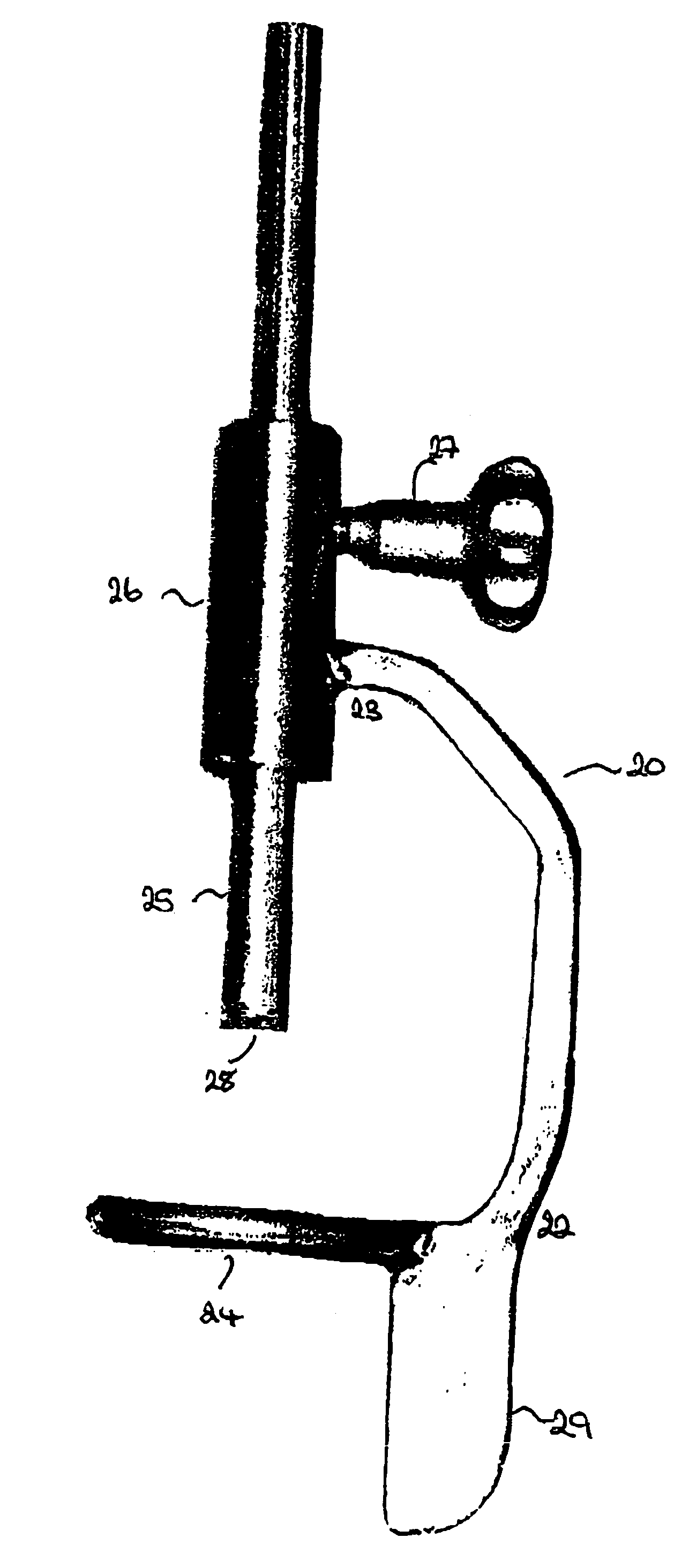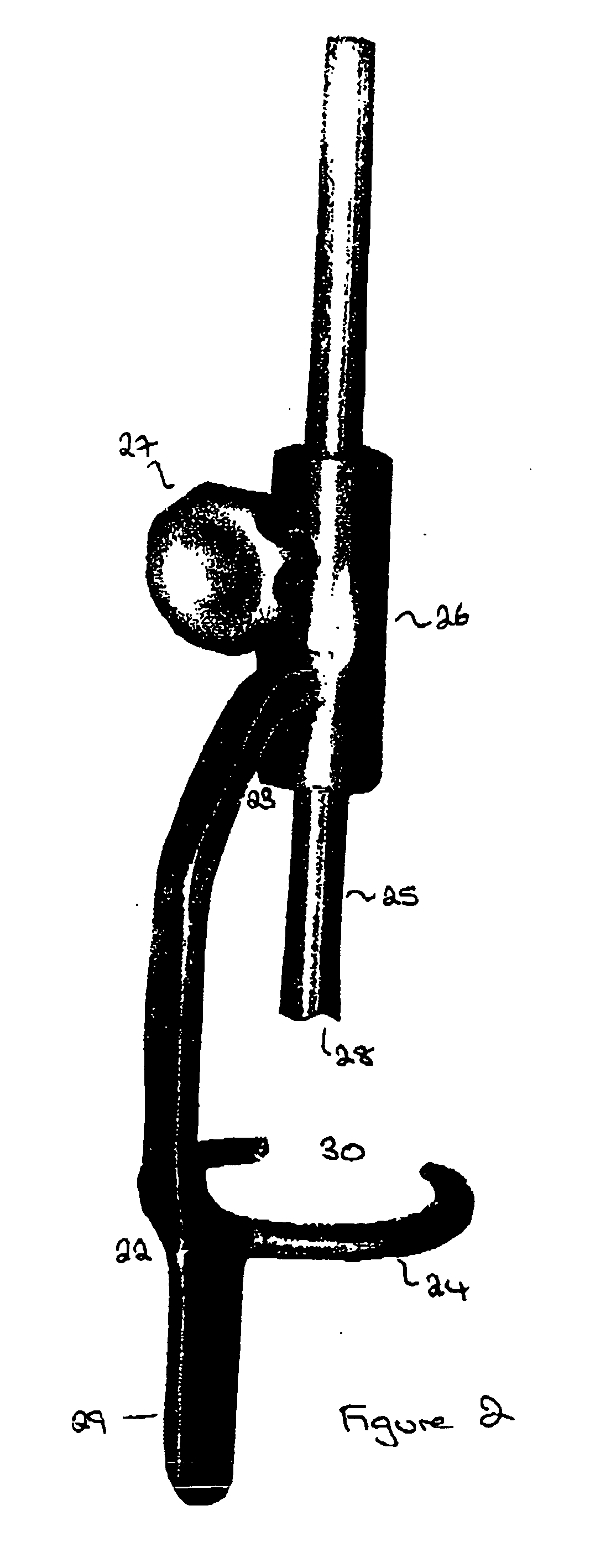Tool
a head alignment and guide technology, applied in the field of tools, can solve the problems of re-formation of the bone, endangering the function of the alignment guide, and further erosion, and achieve the effect of stabilising the alignment guid
- Summary
- Abstract
- Description
- Claims
- Application Information
AI Technical Summary
Benefits of technology
Problems solved by technology
Method used
Image
Examples
Embodiment Construction
[0101] As illustrated in FIG. 1, the alignment guide 20 of one embodiment of the present invention comprises a support arm having a distal 22 and a proximal 23 end. A ring 24 is located at the distal end of the arm and extends therefrom such that it is at right angles to the plane of the arm. However, it will be noted that the arm is shaped to allow the arm, in use, to fit around the femoral head. A cannulated rod 25 is a sliding fit in a collar 26 located at the proximal end of the support arm. The rod 25 is situated such that the cannula is directly above the centre of the ring. A locking screw 27 is provided to enable the rod 25 to be clamped in the desired position. Teeth 28 are provided on the end of the rod which in use will come into contact with the femoral head.
[0102] A flag 29 may be present to assist the surgeon to visually confirm that the alignment guide is in the desired position.
[0103] The alignment of the various components can be seen in FIG. 2. In the illustrated...
PUM
 Login to View More
Login to View More Abstract
Description
Claims
Application Information
 Login to View More
Login to View More - R&D
- Intellectual Property
- Life Sciences
- Materials
- Tech Scout
- Unparalleled Data Quality
- Higher Quality Content
- 60% Fewer Hallucinations
Browse by: Latest US Patents, China's latest patents, Technical Efficacy Thesaurus, Application Domain, Technology Topic, Popular Technical Reports.
© 2025 PatSnap. All rights reserved.Legal|Privacy policy|Modern Slavery Act Transparency Statement|Sitemap|About US| Contact US: help@patsnap.com



